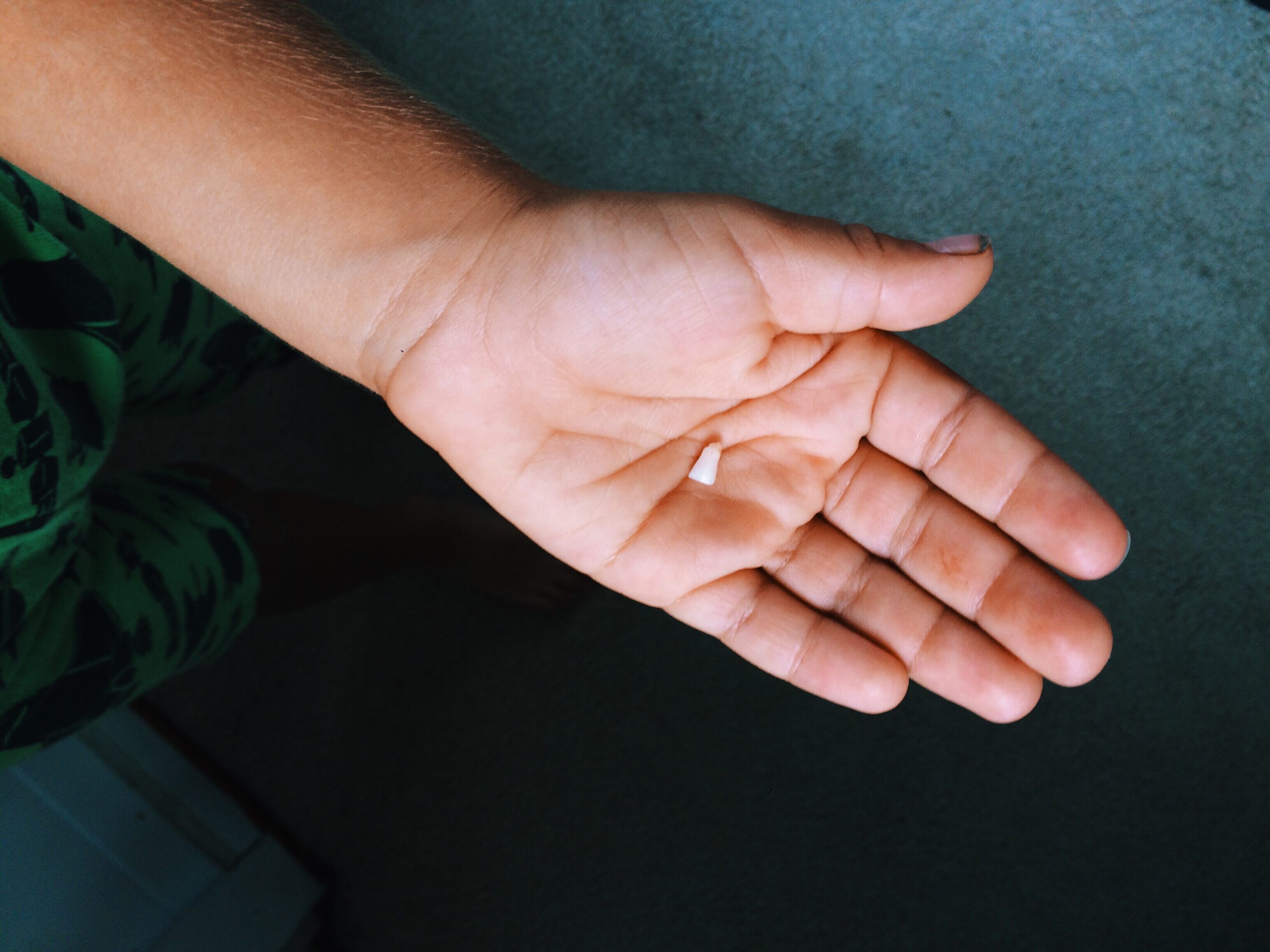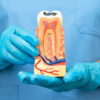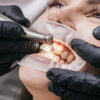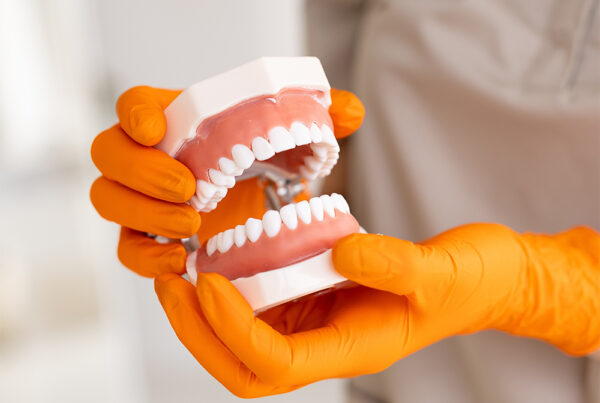What Is Dental Implant?
A dental implant is a titanium post that is surgically placed into the jawbone to act as an artificial tooth root. It is then used to support a replacement tooth, bridge, or denture. Dental implants are the most natural-looking and longest lasting solution for missing teeth and can be used to replace one or multiple teeth.
Dental implants provide many benefits over traditional dentures and bridges, including improved appearance, increased comfort, better oral health, and greater convenience. Implants look and feel like natural teeth because they fuse with the jawbone through a process called osseointegration. This allows them to function just like real teeth so you can eat, speak, and smile with confidence. Additionally, dental implants help maintain your facial structure by preventing bone loss in the jawbone that can occur when teeth are missing. They also make it easier to clean your mouth since there are no gaps between your gums and replacement teeth like there are with traditional dentures or bridges. Finally, dental implants don’t require any special care; you just brush and floss them like regular teeth!
Fracture On Dental Implant
Fractured Implant is a condition that occurs when an implant, such as a dental implant, breaks or cracks. This can be caused by trauma to the mouth, such as a fall or blow to the face, or due to excessive force on the implant during placement. It can also occur if the implant was not properly placed and/or secured in the jawbone. When an implant fractures, it can cause pain and discomfort for the patient. In some cases, it may even cause damage to surrounding teeth and gums. Depending on the severity of the fracture, it may require removal of the implant and replacement with a new one.
In order to prevent fractured implants from occurring, proper care should be taken when placing them in the jawbone. This includes making sure that they are placed correctly and securely so that they don’t move around too much after placement.
If you have already experienced a fractured implant, then it is important to seek treatment right away in order to avoid further complications. Your dentist will likely need to remove the broken piece of implant before replacing it with a new one. Depending on how severe the fracture is, you may also need additional treatments such as bone grafting or other restorative procedures in order to restore your oral health back to normal. Fractured implants can be an uncomfortable experience for patients but fortunately there are ways to prevent them from occurring in the first place as well as treatments available if they do occur. By taking proper care of your dental implants and visiting your dentist regularly for check-ups, you can help ensure that any issues with your implants are caught early on before they become more serious problems down the line.

Loose Dental Implant
A loose implant on dental implant is an issue that can occur when the implant does not fuse properly with the jawbone, or when the abutment (the piece connecting the implant to the crown) becomes loose. This can cause discomfort and affect your ability to chew and speak properly. Fortunately, there are several treatments available for a loose implant on dental implant.
The first step in treating a loose implant on dental implant is to visit your dentist for an examination. Your dentist will be able to determine if the problem is due to poor fusion between the jawbone and the implant, or if it is caused by a loosening of the abutment. Depending on what they find, they may recommend one of several treatments.
One option is bone grafting, which involves adding new bone material around the area of the implant to help secure it in place. Another option is sinus lift surgery, which adds additional bone material above your upper jawbone where implants are typically placed. This helps create a more secure foundation for your implants and can reduce any looseness you may be experiencing.
Your dentist may also suggest using screws or posts to further secure your implants in place if needed. These screws or posts are inserted into your jawbone and act as anchors for your implants, providing extra stability and preventing them from becoming loose over time.
If none of these treatments work, then you may need to have your dental implants removed and replaced with new ones that fit better in your mouth and provide better stability for chewing and speaking comfortably. Your dentist will be able to advise you on whether this is necessary based on their assessment of your situation.

Overloading On Dental Implant
Overloading on dental implants is a common problem that can occur when too much force is placed on the implant. This can cause the implant to fail, leading to pain, discomfort, and potential damage to the surrounding teeth and gums. It is important for patients to understand the risks associated with overloading their implants so they can take steps to prevent it from happening.
When a dental implant is placed in the jawbone, it is held in place by a titanium screw that has been surgically inserted into the bone. Over time, this screw will become embedded in the bone and form a strong bond between the two structures. However, if too much force is applied to the implant, it can cause it to become loose or even dislodge completely from its position in the jawbone. This type of failure can be very painful and lead to serious complications such as infection or damage to nearby teeth and gums.
There are several ways that overloading on dental implants can occur. One of the most common causes is when patients bite down too hard on their implants or use them for activities such as chewing hard foods or grinding their teeth at night. Patients should also be aware of any signs of overloading such as pain or discomfort when biting down on an implant or if they notice any movement of their implant after placement. If any of these symptoms are present, patients should contact their dentist immediately for further evaluation and treatment options.
In order to prevent overloading on dental implants, patients should follow all instructions provided by their dentist carefully during both placement and post-operative care. This includes avoiding biting down too hard on their implants and using them only for activities that are approved by their dentist such as eating soft foods or brushing teeth gently with a soft toothbrush. Patients should also visit their dentist regularly for checkups so any problems with overloading can be identified early before more serious damage occurs.

Gum Recession
Gum recession on dental implants is a common problem that affects many people who have had dental implants placed. It occurs when the gum tissue around the implant begins to recede, exposing more of the implant and creating an unsightly appearance. Gum recession can also lead to other problems such as infection, bone loss, and even implant failure. Fortunately, there are treatments available to help prevent and treat gum recession on dental implants.
The most common cause of gum recession on dental implants is poor oral hygiene. When plaque and bacteria accumulate around the implant, it can cause inflammation and irritation of the gums. This inflammation can lead to gum recession over time as the gums become weakened and start to pull away from the implant. Poor oral hygiene can also increase your risk for developing periodontal disease which can further contribute to gum recession on dental implants.
Other factors that may contribute to gum recession on dental implants include smoking, certain medications, genetic predisposition, hormonal changes, or grinding your teeth at night. In some cases, gum recession may be caused by improper placement of the implant or incorrect restoration of the implant crowns or abutments.

In order to prevent or treat gum recession on dental implants, it’s important to practice good oral hygiene habits such as brushing twice a day with a soft-bristled toothbrush and flossing daily. It’s also important to visit your dentist regularly for professional cleanings and checkups so they can monitor any changes in your gums or detect any signs of infection early on before it becomes serious.
If you already have signs of gum recession on your dental implants, there are several treatment options available depending on how severe it is. Your dentist may recommend scaling and root planing (deep cleaning) in order to remove any plaque or tartar buildup that has accumulated around the implant site. They may also prescribe antibiotics if there is an infection present or suggest surgical procedures such as flap surgery or bone grafting in order to restore lost tissue and support for the implant site.
In some cases where severe bone loss has occurred due to advanced periodontal disease, a full-mouth reconstruction may be necessary in order to restore function and aesthetics back into your smile. During this procedure multiple procedures will be performed including crown lengthening (gum contouring), soft tissue grafts (to replace lost tissue), bone grafts (to rebuild lost bone structure), sinus lifts (to add additional height for better support), and finally placement of new implants along with restoration work such as crowns or bridges in order to complete your smile makeover.
No matter what type of treatment you receive for gum recession on dental implants, it’s important that you continue practicing good oral hygiene habits afterwards in order maintain healthy gums around your implants long-term!

Bone Loss On Dental Implant
Bone loss on dental implants is a common problem that can occur when the implant is not properly placed or maintained. It occurs when the implant does not have enough contact with the surrounding bone, resulting in a decrease in bone density. Bone loss can lead to instability of the implant and other complications such as infection, pain, and even implant failure.
The most common cause of bone loss on dental implants is improper placement. If an implant is placed too deep or too shallow, it can cause insufficient contact with the surrounding bone, leading to bone resorption and eventual failure of the implant. Additionally, if an implant is not placed at the correct angle or depth, it can lead to inadequate osseointegration (the process by which the implant bonds with the surrounding bone). This can also result in bone loss and instability of the implant.

Another common cause of bone loss on dental implants is poor oral hygiene. Poor oral hygiene can lead to plaque buildup around the implant, which increases inflammation and encourages further resorption of surrounding bone tissue. Additionally, bacteria from plaque buildup can enter into the blood stream and spread throughout the body, causing systemic infections that may lead to further bone loss around the site of an implanted tooth.
In order to prevent bone loss on dental implants, it’s important to practice good oral hygiene habits including brushing twice daily with a soft-bristled toothbrush and flossing at least once per day. Additionally, regular visits to your dentist for professional cleanings are recommended as they help remove any built-up plaque or tartar that could contribute to inflammation and infection around an implanted tooth. Finally, if you experience any pain or discomfort near your implanted tooth or notice any changes in its stability be sure to visit your dentist right away so they can assess whether there is any evidence of early stage bone loss before it becomes more serious.
If you already have experienced some degree of bone loss on a dental implant then there are treatments available that may help reduce further resorption and improve stability of your implant. These treatments include regenerative procedures such as grafting additional healthy tissue onto existing sites where there has been some degree of resorption or using medications such as antibiotics or anti-inflammatory drugs to reduce inflammation around an affected area. In more severe cases where extensive damage has occurred surgical intervention may be necessary in order to replace lost tissue and stabilize an affected area before attempting any restorative work such as crowns or bridges over an affected site.







